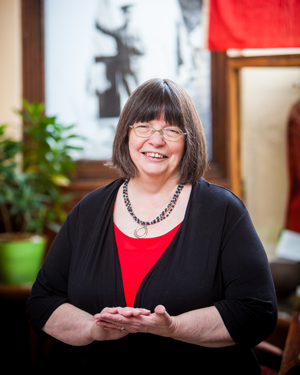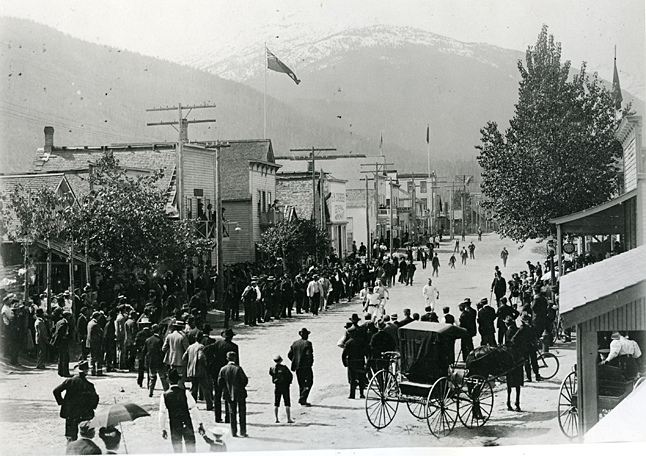The Revelstoke Museum & Archives has a new book about our community’s colourful history.
Brown Bag History – Revelstoke Origins by Museum Curator Cathy English is being launched at the Museum on Thursday, June 25, with a party from 3 until 5 pm.
Curator
Revelstoke Museum & Archives
This 144-page soft-cover book is based on the noon-hour Brown Bag History series of talks Cathy has been giving at the museum since 2003. Over the course of 12 years, Cathy has presented more than 200 talks on themes relating to the history of Revelstoke and district.
This first volume of Brown Bag History features 12 stories based on those talks and focuses on the early history of Revelstoke, from the original First Nations inhabitants, to the development of the community. Discover how the town started out as Farwell, and how a land conflict shifted the downtown area from Front Street up to Mackenzie Avenue. Find out why Revelstoke is named after a British Lord who never set foot here. Enjoy the antics of the two police forces as they arrested each other. Learn about the short-lived smelter that ended up in the Columbia River due to erosion. Explore the colourful history of Revelstoke through the pages of this book. Also featured in the book are four cartoons by Revelstoke’s popular cartoonist, Rob Buchanan. Two of them were created exclusively for this volume.
Editor’s Note:
The Current is pleased to reprint this excerpt from Brown Bag History – Revelstoke Origins by Museum Curator Cathy English, which is being officially released to the public during a ceremony at the museum on Thursday, June 25, at 3 pm.
Life in Farwell

Farwell’s original townsite of 1885 extended from the CPR Mainline and south to just below the Douglas Street hill. In a map drawn in 1885, Victoria Road is seen curving along the base of the hill, creating a semi-circle shaped townsite. Most of the early businesses were concentrated on Front Street, next to the Columbia River. Going by early photographs and firsthand accounts of the town, it could be described as “wild west” in appearance and character.
A.S. Farwell gave an interview to a reporter from the Daily Colonist, a Victoria newspaper, in February of 1885. At that time, Farwell had partly surveyed the townsite, and was expecting it to be a major center for transportation, mining and sawmilling and anticipated that it would be a town of several thousand people. He was still hoping to negotiate with the CPR for purchase of his land.
A correspondent described the townsite in the Daily Colonist of April 7, 1885:
“The new town of Farwell has grown amazingly. The main street is covered with houses, on both sides, for about half a mile, and another is cut out and partially lined with houses. Some of these are substantial buildings, one of them I am told represents a cost of $4,000. There are about a dozen respectable married white women with their families, and a population on the whole of a good class, though with some of the tough breed. Incomers from the west are surprised to find that we have billiard tables and comfortable accommodations for a new town. Farwell already is three or four times as large as Kamloops… The streets, so far, have been laid off in pretty regular form…”
The writer also noted that the North-West Mounted Police had established a barracks, cells and stable at the top of the hill above the new townsite. He also mentioned a new sawmill under construction. The steamship Columbia was making regular summer trips from Washington State, bringing in workers, supplies, and, if the rumours are to be believed, illegal supplies of alcohol.
In the 1930s, Earle Dickey began collecting historical accounts of early Revelstoke from some of the pioneers who were still living here. From these accounts, he produced a hand-drawn map of Front Street in the 1880s, showing the location of the earliest businesses. The map shows over 12 saloons, about eight hotels, four or five brothels, three general stores, two dancehalls, a doctor’s office, drugstore, barber, blacksmith, tinsmith and butcher.
A fire swept through the town on May 7, 1885 and destroyed many of the buildings, but by the end of the month, they were mostly rebuilt. The Daily Colonist reported that by May 24, there were 83 houses erected and others partly built, giving a good idea of the rough and quick style of building employed at the time. The emphasis was on getting buildings up quickly so as not to lose out on trade during the railway construction boom. Architectural and style concerns could wait.



